第20章 LETTER IV(2)
At some distance below Shameen there are moored tiers of large, two-storied house boats, with entrance doors seven feet high, always open, and doorways of rich wood carving, through which the interiors can be seen with their richly decorated altars, innumerable colored lamps, chairs, and settees of carved ebony with white marble let into the seats and backs, embroidered silk hangings, gilded mirrors and cornices, and all the extravagances of Chinese luxury. Many of them have gardens on their roofs. These are called "flower boats," and are of noisy and evil reputation. Then there are tiers of three-roomed, comfortable house boats to let to people who make their homes on the water in summer to avoid the heat. "Marriage boats," green and gold, with much wood carving and flags, and auspicious emblems of all kinds; river junks, with their large eyes and carved and castellated sterns lying moored in treble rows; duck boats, with their noisy inmates; florists' boats, with platforms of growing plants for sale; two-storied boats or barges, with glass sides, floating hotels, in which evening entertainments are given with much light and noise; restaurant boats, much gilded, from which proceeds an incessant beating of gongs; washing boats, market boats, floating shops, which supply the floating population with all marketable commodities; country boats of fantastic form coming down on every wind and tide; and, queerest of all, "slipper boats," looking absurdly like big shoes, which are propelled in and out among all the heavier craft by standing in the stern.
One of the most marvelous features of Canton is the city of house boats, floating and stationary, in which about a quarter of a million people live, and it may with truth be added are born and die. This population is quite distinct in race from the land population of Canton, which looks down upon it as a pariah and alien caste. These house boats, some of which have a single bamboo circular roof, others two roofs of different heights, and which include several thousand of the marvelous "slipper boats," lie in tiers along the river sides, and packed closely stem and stern along the canals, forming bustling and picturesque water streets. Many of the boats moored on the canals are floating shops, and do a brisk trade, one end of the boat being the shop, the other the dwelling-house. As the "slipper boats" are only from fifteen to twenty feet long, it may be imagined, as their breadth is strictly proportionate, that the accommodation for a family is rather circumscribed, yet such a boat is not only the home of a married pair and their children, but of the eldest son with his wife and children, and not unfrequently of grandparents also! The bamboo roofs slide in a sort of telescope fashion, and the whole interior space can be inclosed and divided. The bow of the boat, whether large or small, is always the family joss house; and the water is starred at night with the dull, melancholy glimmer, fainter, though redder than a glow-worm's light, of thousands of burning joss-sticks, making the air heavy with the odor of incense. Unlike the houses of the poor on shore, the house boats are models of cleanliness, and space is utilized and economized by adaptations more ingenious than those of a tiny yacht. These boats, which form neat rooms with matted seats by day, turn into beds at night, and the children have separate "rooms." The men go on shore during the day and do laborer's work, but the women seldom land, are devoted to "housewifely" duties, and besides are to be seen at all hours of day and night flying over the water, plying for hire at the landings, and ferrying goods and passengers, as strong as men, and clean, comely, and pleasant-looking; one at the stern and one at the bow, sending the floating home along with skilled and sturdy strokes.
They are splendid boat-women, and not vociferous. These women don't bandage their feet.
Their dress is dark brown or blue cotton, and consists of wide trousers and a short, loose, sleeved upper garment up to the throat. The feet are big and bare, the hair is neat and drawn back from the face into a stiff roll or chignon, and they all wear jade-stone earrings. You see a woman cooking or sewing in most housewifely style in one of these "slipper boats;" but if you hail it, she is plying the heavy oar in one moment, and as likely as not with a wise-looking baby on her back, supported by a square piece of scarlet cloth embroidered in gold and blue silks. Not one of this river population has yet received Christianity. Very little indeed is known about them and their customs, but it is said that their morals are low, and that when infanticide was less discouraged than it is now, the river was the convenient grave of many of their newly-born female children. I spent most of one afternoon alone in one of these boats, diving into all canals and traversing water streets, hanging on to junks and "passage boats," and enjoying the variety of river life to the full.